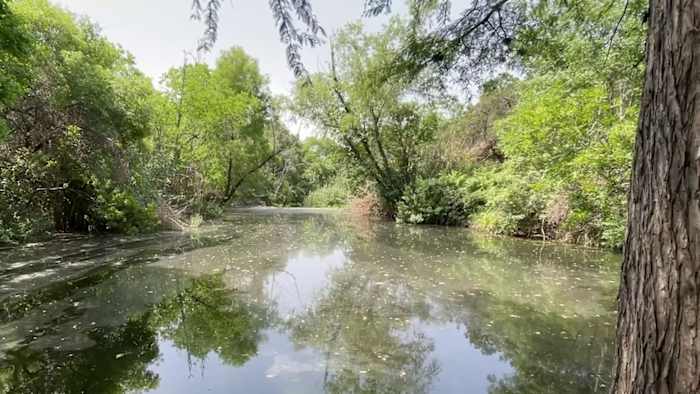Our Terms & Conditions | Our Privacy Policy
Proposed wastewater treatment plant could make San Antonio’s water undrinkable, scientist says
BEXAR COUNTY, Texas – Across the state, there are dozens of wastewater treatment facilities like the one proposed in northwest Bexar County.
But building it on the Guajolote Ranch site that sits on the Helotes Creek watershed could make San Antonio’s water unsafe to drink, researchers said.
“That wastewater treatment process does not purify the water to the point where it supports human consumption,” said Stuart Birnbaum, Emirates Associate Professor of Planetary Earth and Sciences at University of Texas San Antonio.
The plant is still awaiting approval from the Texas Commission on Environmental Quality, but northwest Bexar County residents are trying to spread the word about the damage that could be caused by the project.
The treatment facility is part of a larger 2,900-home project, Guajolote Ranch, being built by the Lennar Corporation.
In order for water to be safe to drink, Birnbaum said the treatment process must be perfect.
“Water treatment facilities fail a lot,” Birnbaum said.
Additionally, he said the chemicals used in the process could be harmful and potentially cause cancer.
While the process is used all over Texas, Birnbaum said the Helotes Creek watershed is extremely delicate due to its unique characteristics.
While most aquifers are made of sand or mud, the Trinity and Edwards aquifers are made of limestone. This means the river beds don’t have sand, mud or plants to naturally filter the water and absorb chemicals or pollutants.
“Limestone is not going to clean up the water the way sand or sandstone will,” Birnbaum said. “That means that this contaminated water is constantly, constantly flowing with little to no dilution effect. Again, it just builds up over time.”
Additionally, while scientists can predict where water will flow into most watersheds, Birnbaum said the limestone makes Helotes Creek watershed less predictable.
“Water’s gonna flow through cracks and fractures and holes,” Birnbaum said, “whether the hole is pencil width or whether the hole is a cave.”
If the water gets contaminated, Birnbaum said it can end up in people’s wells in a matter of days. If the water flows into the Edwards Aquifer, it would contaminate the source for 15% of San Antonio’s drinking water.
Randy Neumann, a northwest Bexar County resident who has done extensive research on the subject, said the state commission needs to have separate regulations for different types of aquifers.
“TCEQ has one rule, Neumann said. “They don’t differentiate between a soil river and a half-pipe made of limestone. They apply the same generic rule to every river in Texas, and so those rules really are inadequate for this application.”
State administrative law judges recommended the commission to approve the wastewater permit for the Guajolote Ranch development in May. Their decision is not final, however, and could lead to further legal battles.
The matter is being reviewed by the commission, according to the Scenic Loop-Helotes Creek Alliance, which may extend into August.
KSAT has emailed and called the Lennar Corporation multiple times requesting an interview or statement regarding the issues that researchers and residents have brought up about the potential harmful impacts to the area. Lennar has not responded to those requests.
Copyright 2025 by KSAT – All rights reserved.
Images are for reference only.Images and contents gathered automatic from google or 3rd party sources.All rights on the images and contents are with their legal original owners.



Comments are closed.